52 Weeks of Inspiring Illustrations, Week 7: ‘Drawings made by a black fellow at Corowa New South Wales June 1886’
“Drawings made by a black fellow at Corowa New South Wales June 1886. His name I do not know. By the whites he goes by the name of Tommy Macrae…He is quite self-taught at drawing.”
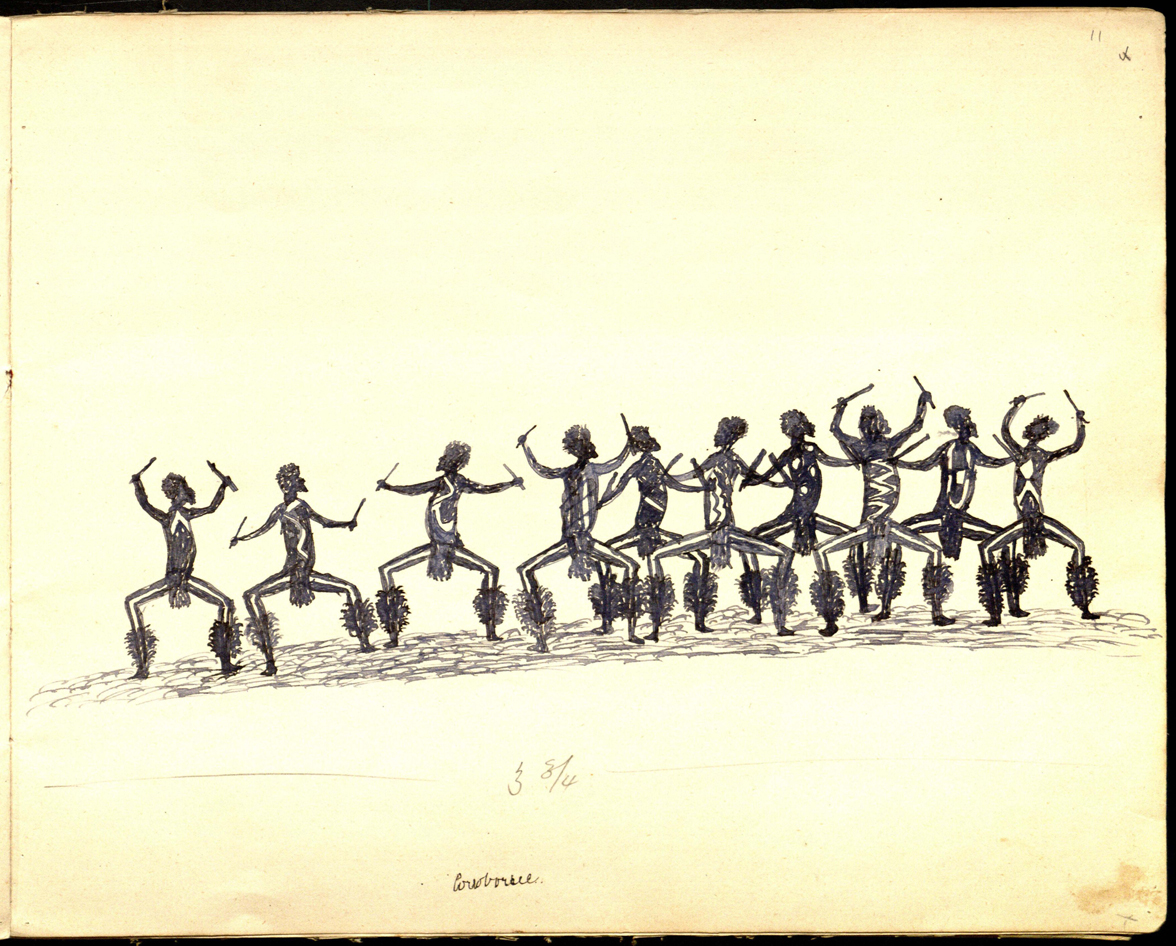
This is the handwritten note on an unpromising looking Victorian sketchbook (ms38248). Yet inside is a remarkable series of pen and ink pictures created by highly regarded Aboriginal artist Tommy McRae (c.1844-1901), known also as Yacaduna. McRae lived in a bark hut on the Murray River near Lake Moodemere on the New South Wales/Victoria border. He drew from his own experiences to record both the customs and way of life of the Aborigines and the changes wrought in their society after the arrival of the Europeans. His drawings of native hunting, fishing, ceremonies and animals soon became popular with Westerners and he was able to earn a living from his artistry. Often new settlers would buy sketchbooks for him to fill with drawings.
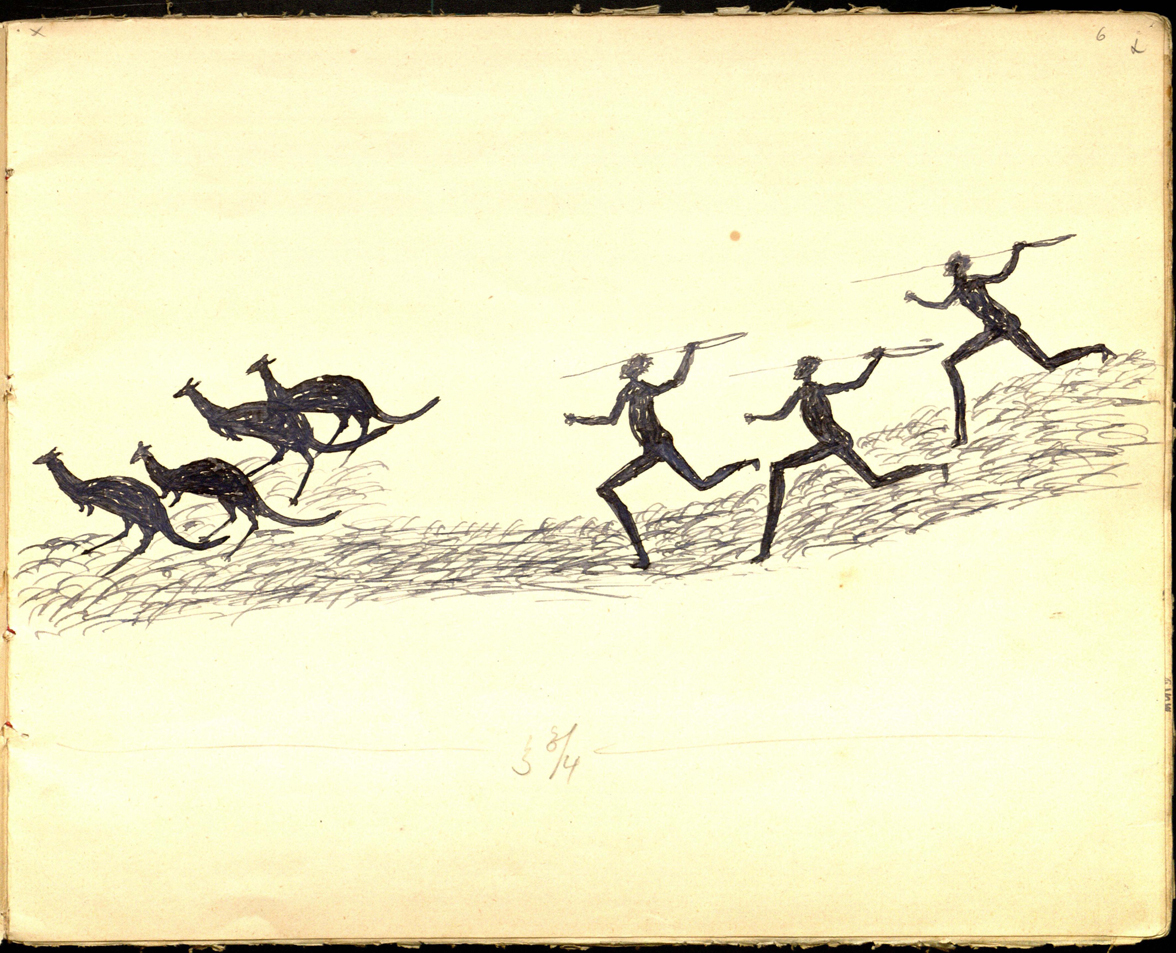
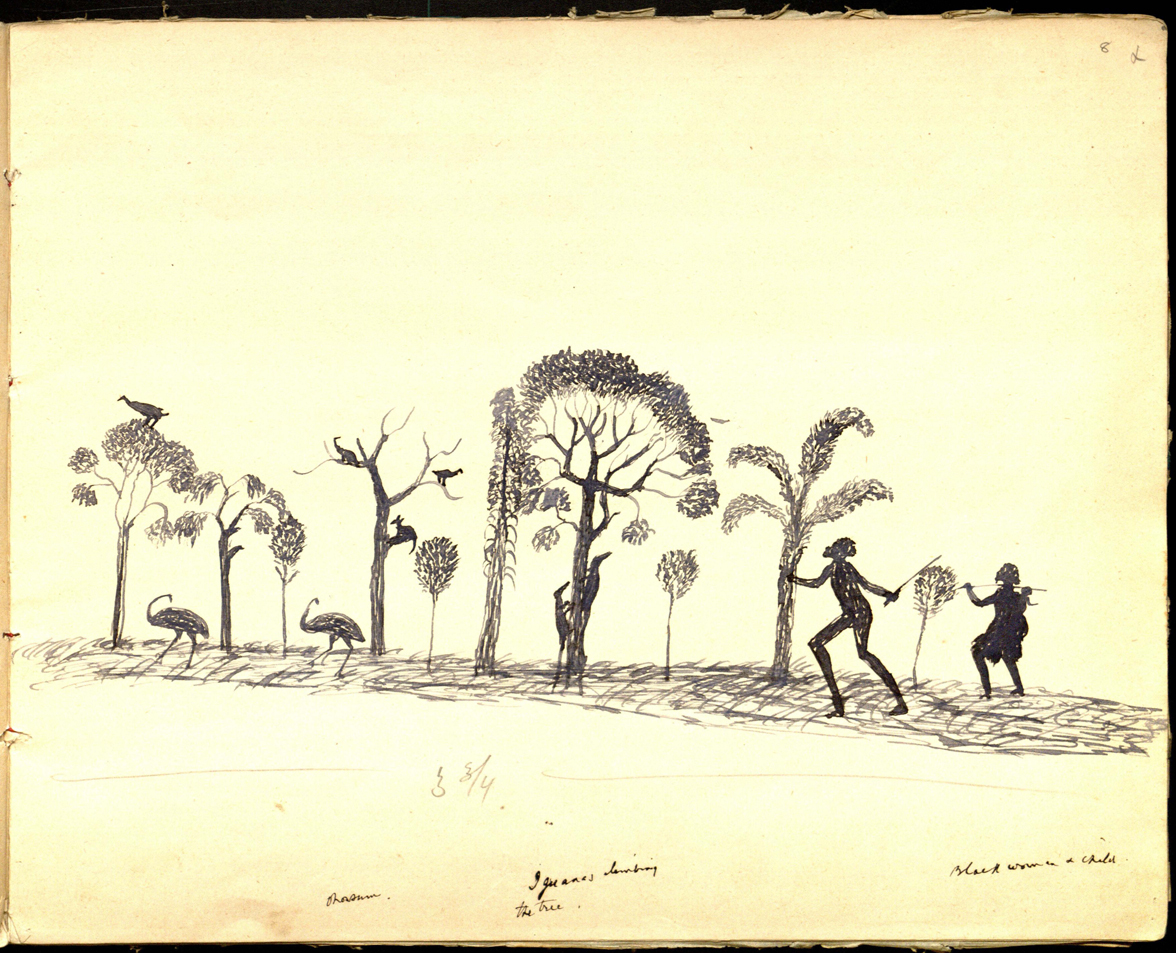
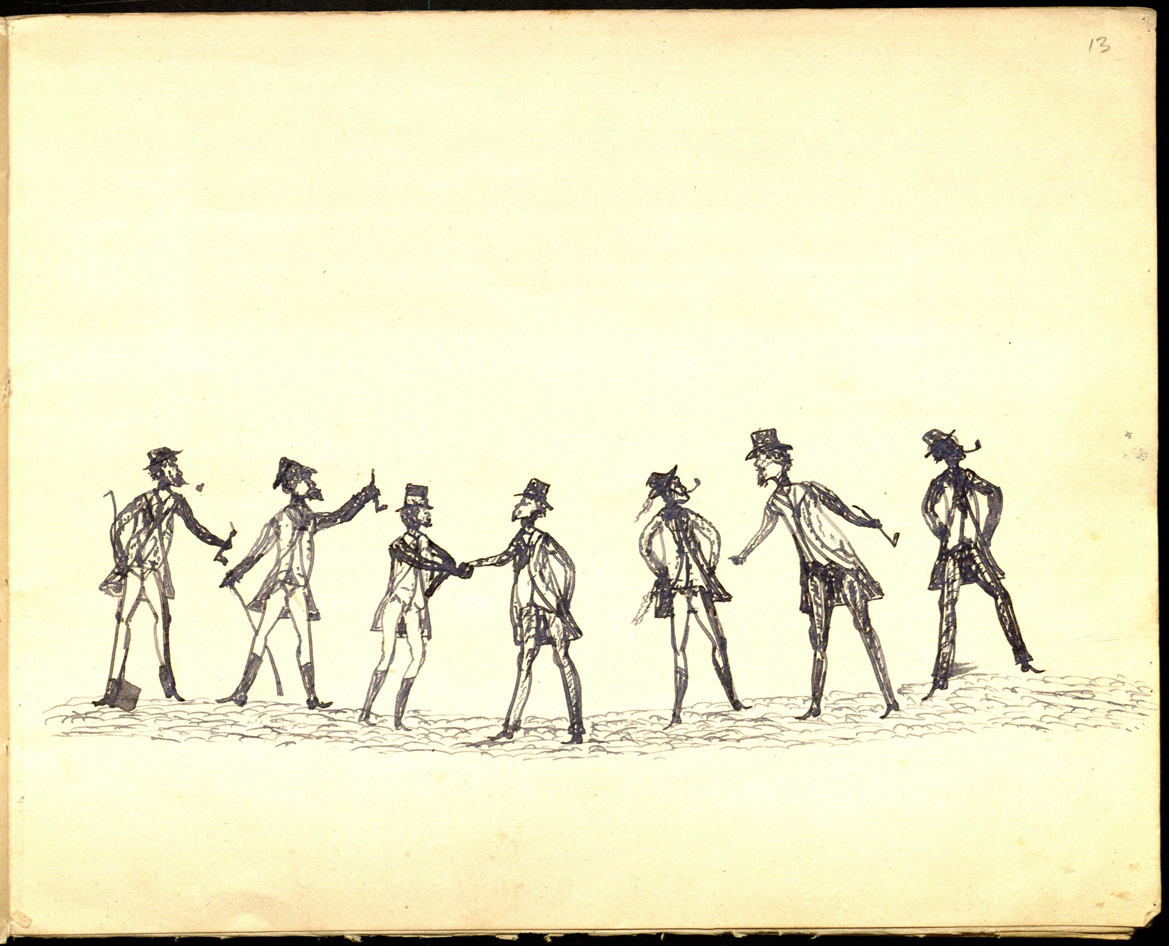
McRae’s works are now highly collectable and much sought after in Australia. How this one comes to be here in St Andrews is part of the story of the Scottish diaspora, of educated men and women who left these shores to further their careers and experiences abroad. Our sketchbook comes from the papers of Andrew Lang (1844-1912), novelist, essayist and folklorist. It was sent to him by his brother William Henry Lang (1859-1923), who had emigrated to Australia around 1894 to work as a doctor at Corowa. He wrote the notes at the start of the book and annotated the drawings to explain them: ‘Drawings made by a Black fellow at Corowa, New South Wales, June 1886. His name I do not know. By the whites he goes by the name of Tommy Macrae…He is quite self-taught at drawing’. Lang comments on a great commotion one night when McRae brought his wife to Lang, surrounded by a pack of dogs and children, after she had been bitten by a snake.
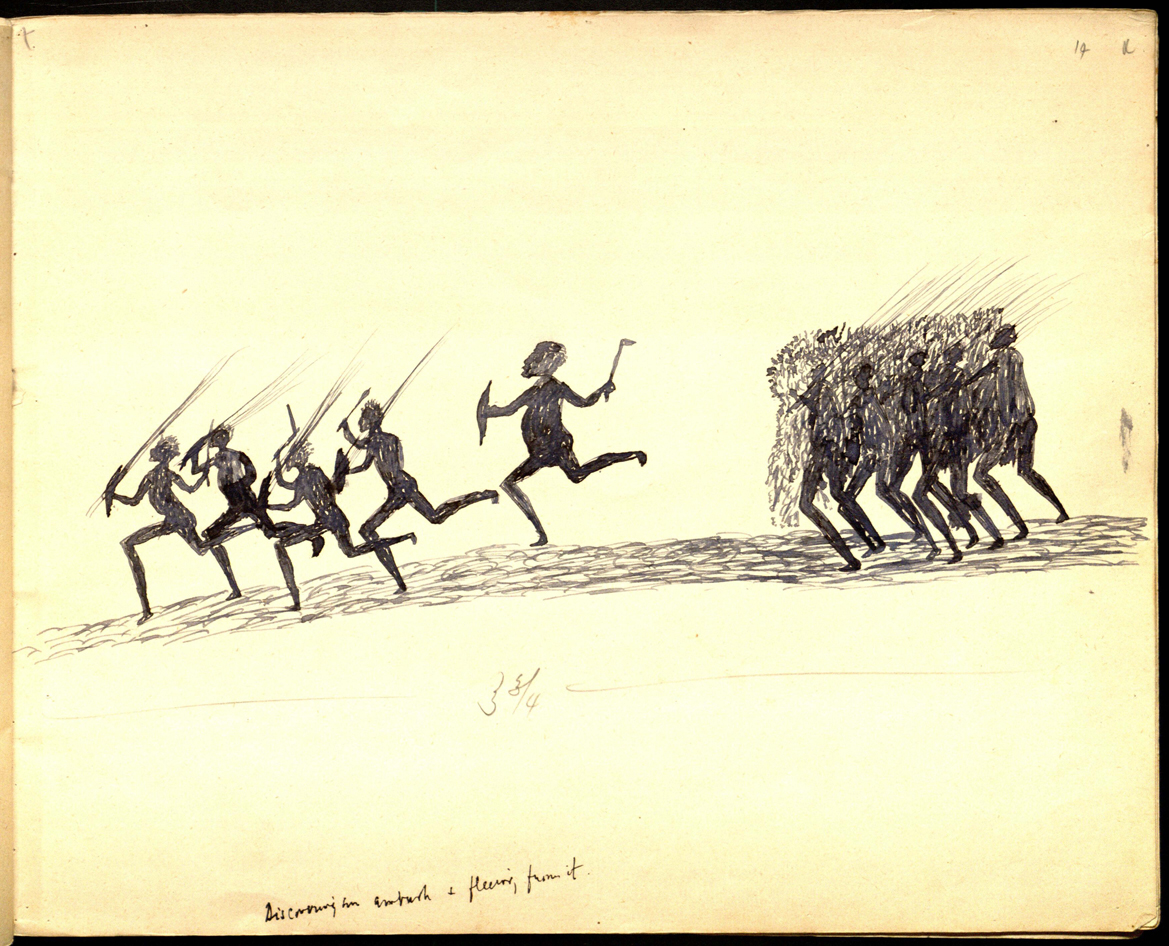
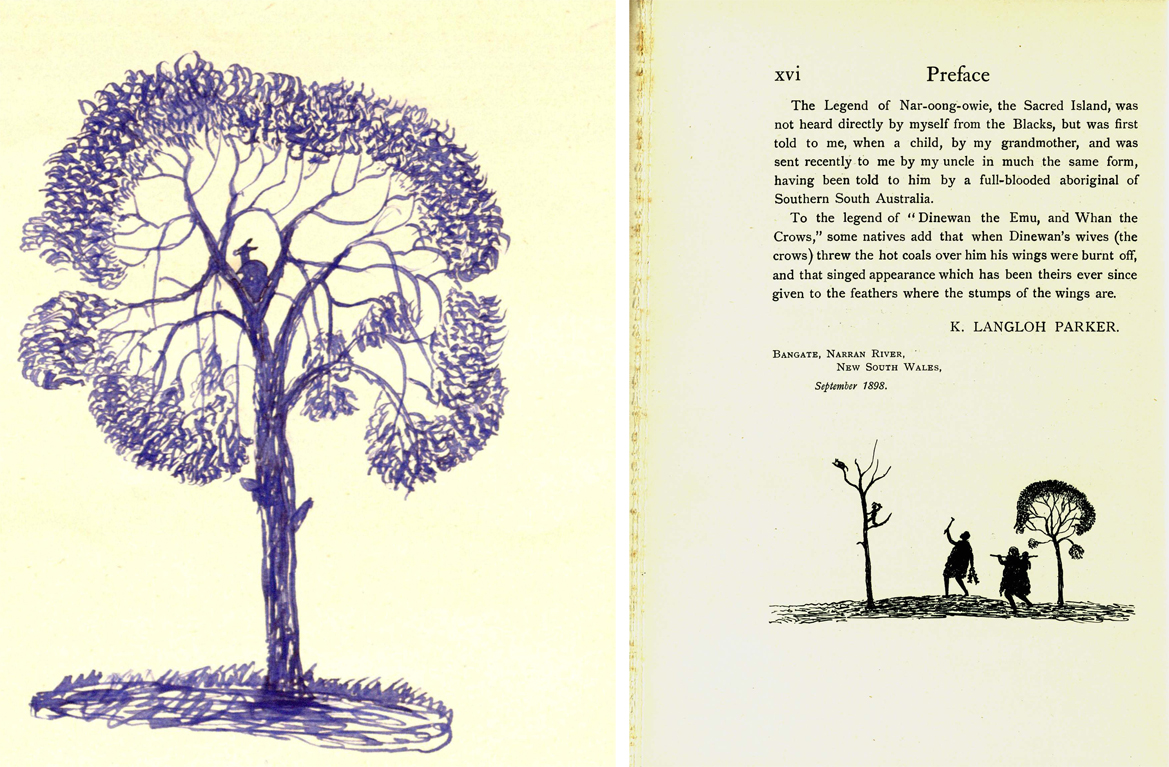
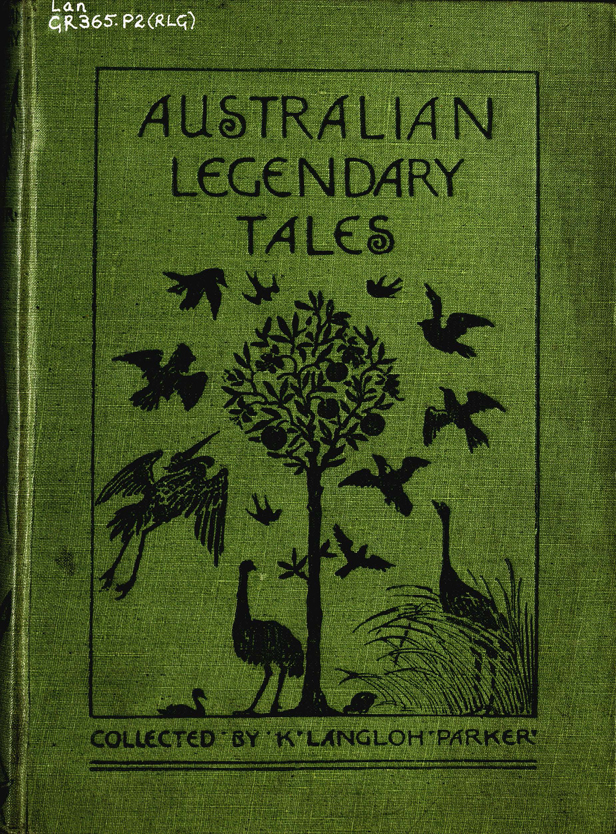
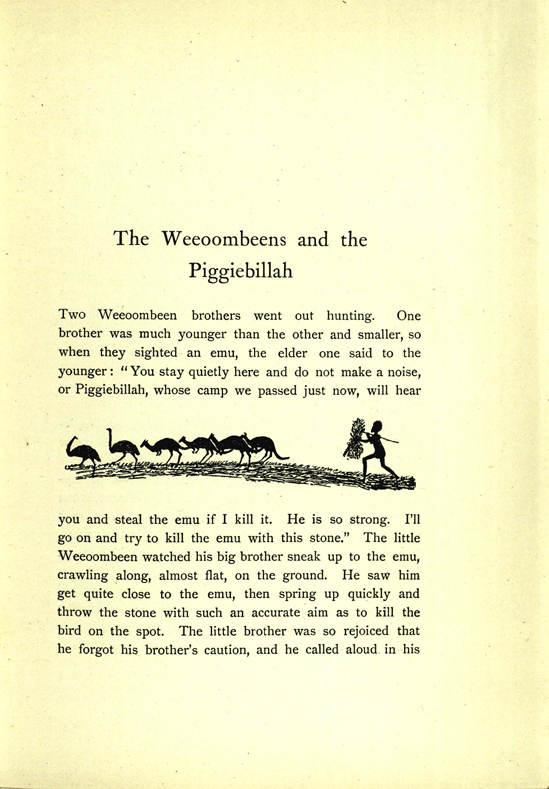
The drawing book contains 18 pen and ink sketches, many of which are shown here. Some of these drawings were used as illustrations in 2 books on Australian folk-lore, collected by Mrs K Langloh Parker and published in 1897 and 1898. Andrew Lang provided an introduction to both of them and both are available in Special Collections.
–Maia Sheridan
Manuscripts Archivist
The birds and trees are identifiable, and still to be seen, but the Kwatkwat are remembered only as a property name, Quat Quatta.